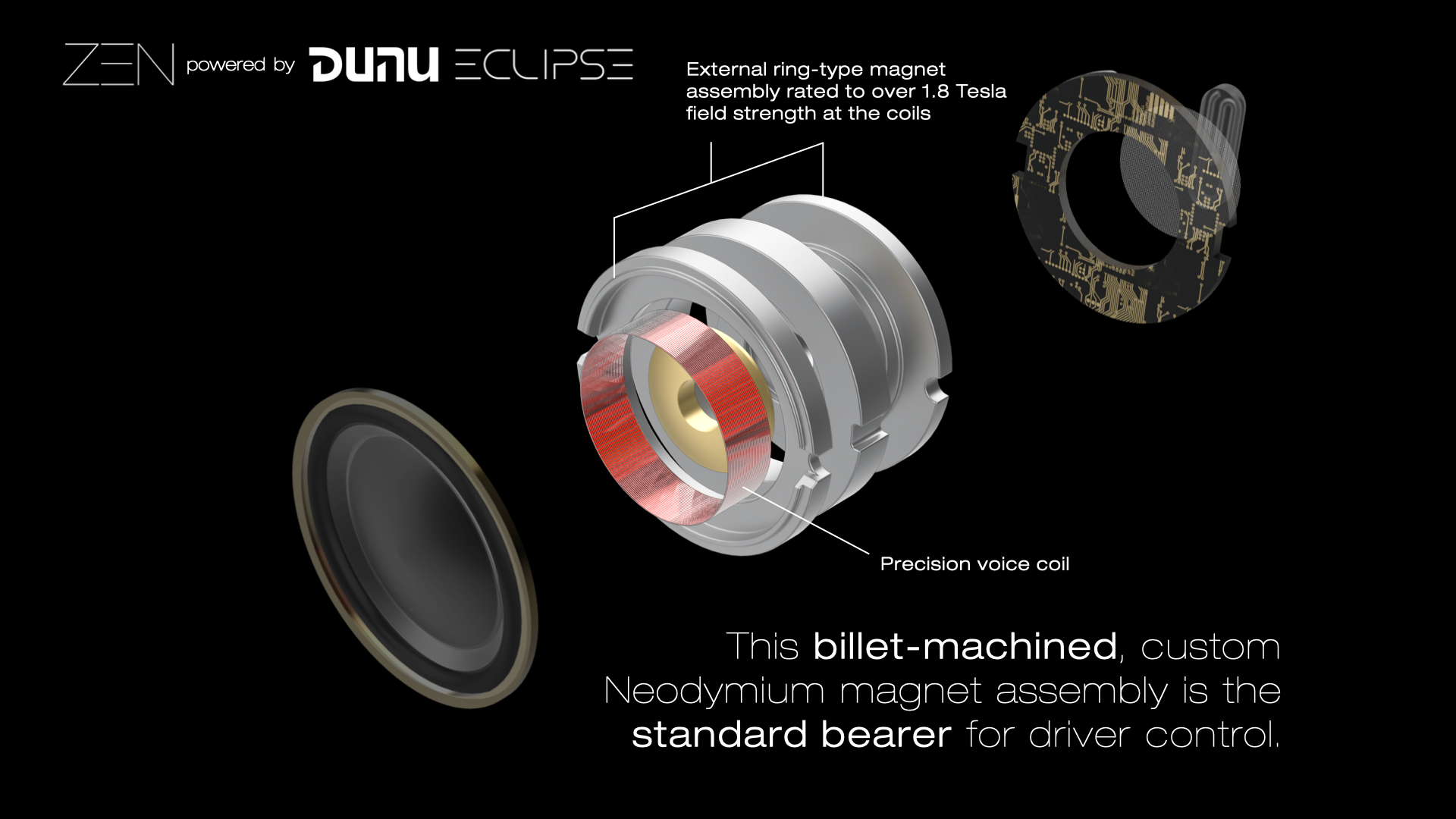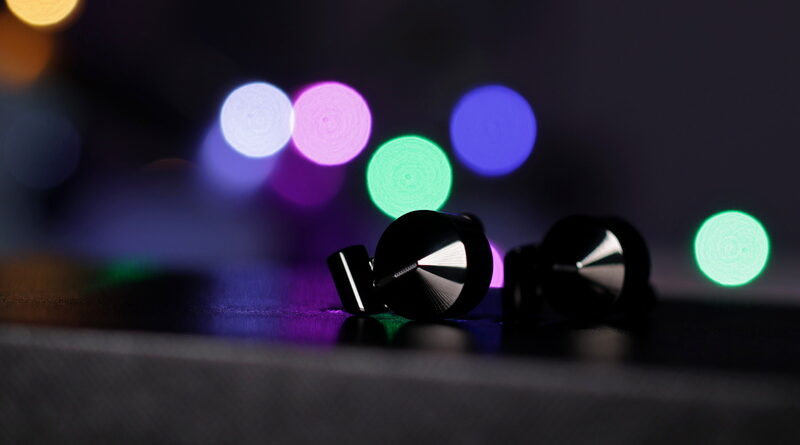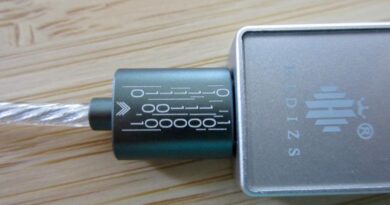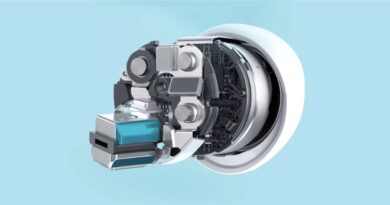Dunu Zen Review – Zenith
Pros — Build and accessory pack (great stock cable)
– Bass texture, slam, and speed
– Rich, engaging midrange that excels at male vocals
– Class-leading macro and micro-dynamics
– Superb stage depth/height/imaging/instrument separation
Cons — Requires tip rolling
– Upper-midrange glare
– Peak around 8KHz can be an issue in some recordings
– Soundstage width is below-average
– Lack of upper-treble air
In this Article
INTRODUCTION
Single-dynamic driver IEMs have been a rare breed in the flagship territory for a while.
In the years past, most TOTL stuff have either been all-BA or hybrid designs. A subtle letdown for those who prefer a single dynamic setup due to the coherency and the dynamism they are capable of producing.
Dunu raised some eyebrows at the beginning of last year when they announced the Dunu Luna — a $1700 pure Be-foil totting single-dynamic flagship that introduced a number of “firsts” for both the company and the IEM scene in general. The Dunu Zen is a somewhat downscale version of their flagship but this time it’s totting an Magnesium-Aluminium alloy driver. Parallels can be drawn between Focal Utopia/Dunu Luna and Focal Clear/Dunu Zen and you wouldn’t be wrong.
That being said, the Dunu Zen isn’t just some cut-down model, rather it’s got its own identity in terms of tuning along with the ECLIPSE driver system that’s been specifically developed for this model (and will be used in future Dunu models).
As usual, there’s a lot to cover here, so let’s get right into it.
Note: the ratings given will be subjective to the price tier. Dunu was kind enough to send me the Zen as a review loaner (thanks Tom!) Disclaimer
This review was initially published on my blog.
Sources used: Cowon Plenue R2, Questyle CMA-400i, iFi Hip DAC
Price, while reviewed: $700. Can be bought from Dunu’s Official Website.
PHYSICAL THINGS AND USABILITY
IN THE BOX…
I’ll just link to my unboxing video here:
PACKAGING AND ACCESSORIES
Let’s just say that the Dunu Zen sports the best stock cable you’ll get under $1000 mark. Everyone should take a note from Dunu when it comes to the quality and quantity of accessories they provide. The Dunu Zen does have a lot of similarities with the Dunu Studio SA6’s accessory pack though the former comes with an extra airplane adapter and a nice shirt-clip. Also there are some extra pairs of tips that are eerily similar to Sony hybrid tips. Aside from those there are the Dunu signature blue and white tips, though I wish the blue ones had a less stiff stem.
If I have to really nitpick: I wish they came with some Spinfit CP-145/CP-500 tips. That’s about it.
5/5
BUILD QUALITY
If Batman had an IEM, the Dunu Zen would probably be it.
A 316L stainless steel body with a glossy piano-black finish, a slit on the back for Dunu’s proprietary ACIS (Air Control Impedance System) mechanism (now installed as a module), and another vent near the nozzle. The Zen’s build in a nutshell. The circular radiant pattern on the back gives the Dunu Zen a distinct look. The design has some similarities with their flagship, Dunu Luna, with a side-mounted stem that houses the mmcx port but the Dunu Zen has its own design language. Compared to the Luna there aren’t as many subtle design cues but for less than half the price I’m not expecting those either.
The shells feel positively dense, has a unique design, and has no visible imperfections. Biggest issue: it’s a fingerprint magnet and difficult to photograph (!) but those are nitpicks at best.
5/5
COMFORT AND ISOLATION
Isolation is good, though one must note that the Dunu Zen leaks sound due to the ACIS vent. Comfort is excellent as well with a snug fit. Due to the weight of the shells though the fit isn’t as secure as some resin-shell pseudo-custom designs out there.
4/5
DRIVER SETUP
Dunu debuted a new driver system with the Zen that goes by the ECLIPSE trademark. This system doesn’t necessarily indicate the diaphragm material rather how the dome, driver surround, and voice-coil attachment process is executed.
The Dunu Zen has a 13.5mm dynamic driver system with a Magnesium-Aluminium alloy diaphragm where the micro-pores on the diaphragm surface have been filled with nanoDLC to increase surface stiffness. The driver also has a W-shaped dome and this entire assembly reminds me of the Focal Clear driver (which is one of the best dynamic driver systems out there btw).
Another interesting thing about the driver dome here is that it occupies a larger area than the typical driver systems. The magnet assembly is also unique in that it’s a ring-type motor and has 1.8T magnetic flux which is the highest among all single-DD out there to my knowledge.
What all this means is that the Dunu Zen’s driver system allows it to have superior driver control, much better excursion, and faster transients than most other single-dynamic systems out there (with the exception of the Be-driver IEMs).
The following images can be referenced for more detail (All are courtesy of Dunu).

Dunu definitely has poured a lot of work into this new driver system, but it will all be for naught if the sound quality doesn’t live up to the engineering efforts. Fortunately, that’s not the case.
All sound impressions are made with the Dunu Zen + stock cable (2.5mm/4.4mm plugs) + Spinfit CP-500 tips.
TONALITY AND TECHNICALITIES
Dunu Zen has a mostly warm presentation with some emphasis in the upper-mids and mid-treble. The upper-treble is rolled-off whereas the sub-bass gets a boost around the 60Hz region which then slowly tapers off as it reaches 20Hz.
Before proceeding further with the sound impressions, I must talk about the effect tips/insertion depth have on the Dunu Zen’s signature. After trying out several tips I noticed a pattern. The Dunu Zen sounded the best when the distance between the mesh on the nozzle and the output bore of the tip was minimized. Having a larger distance would negatively affect separation/imaging and emphasize the peaks ~2.5KHz and ~8KHz. This leads to a shouty, shrill presentation that I didn’t like personally.
Minimizing the distance with the Spinfit CP-500 tips, by sliding the eartip stem down to the base of the nozzle (pictured below) and then going for a snug fit (by trying to push the IEMs as far in the canals as possible) resulted in a superior presentation. The upper-mid peak only showed up on certain recordings and the 8KHz peak was far less intrusive. Instrument separation and imaging also improved noticeably.
One negative thing about reducing the gap between the nozzle and tip-bore is that it reduces the soundstage width. Given the tonal improvements it’s a worthy sacrifice IMO.
When set up optimally, the Dunu Zen’s bass response stands out the most. The mid-bass texture is some of the best I’ve heard out of an IEM across any price point. Yes, it’s bested by the Sony IER-Z1R’s bass texture but that thing puts almost every IEM to shame when it comes to bass. It’s a wholesale upgrade over any IEM out there that uses a balanced-armature driver for bass and even most hybrid setups. Another aspect of the bass that stood out was the reverb which coupled with the natural decay resulted in an almost physical bass-response. This driver, however, is capable of much more and you can EQ it into a sub-bass monster. With the Cowon Plenue R2’s “Mach3Bass” DSP preset the bass response is frankly bass-head level and almost trades blows with the IER-Z1R. Then again, that’s DSP-based cheating in a sense so I’d only refer to it as a fun experiment.
The transition from bass to mids is handled well with the corner-frequency at ~300Hz adding some body to the mid-bass without clouding the lower-mids. It does add a bit of heft and warmth to the lower-mids and coupled with the emphasized upper-mids (~10dB higher than lower-mids) you get an almost euphonic midrange presentation. Warm, rich, engaging — these are the operative words when describing the Dunu Zen’s midrange. The 2.5KHz peak though can be exaggerated in certain tracks with high pitched female vocals/guitar distortion and can even get slightly shouty, though it never got uncomfortable for me. Your mileage might vary. Male vocals are superb though with baritone vocals getting special treatment. String instruments are put on the forefront and acoustic guitars esp has a nice bite to them.
The treble, then, is the most contentious part of the Dunu Zen’s signature (along with the upper-mid peak though it looks scarier on the graphs IMO). It rolls off drastically after 11KHz or so. Dunu does explain that this is due to the Zen’s driver having higher distortion in the upper-treble region but this also put off those who prefer an airy, ethereal treble. To offset this treble peak, perhaps, Dunu decided to add more presence near the 8KHz region and this can be detrimental if you’re listening to poorly mastered tracks. On most well-mastered material this treble peak didn’t really bother me and even in some shoddily mastered songs I never felt any sibilance or shrillness. Cymbals, hi-hats have slight emphasis on the leading edge of the notes and in busy passages the cymbal hits never bled into one another. It’s the resonance that’s often lost, as can be heard in Lamb of God’s Ruin (2:40 onwards). The treble is resolving enough overall, but I do admit a bit more air would be beneficial.
All that being said, the most underrated part of the Dunu Zen is its overall dynamics, especially how well it handles microdynamics (gradual shift in volumes). Macrodynamics are no slouch either with sudden bass-drops being delivered with gusto. The dynamics are definitely aided by the speed of the driver. The Dunu Zen has the second-fastest dynamic driver I’ve heard till date, with the top spot being taken by the Dunu Luna and Final A8000. Transients are near-instantaneous in their delivery and this leads to a sense of speed that’s hard to come across in the single-dynamic IEM space. No, it won’t beat a planar magnetic headphone for speed but given the physical constraints Dunu did a mighty fine job.
Then comes the soundstage and while the stage depth and height is some of the best in its price class, it’s the stage width that takes a hit. The instruments are placed very close to the listener which somewhat increases note-size. Some might prefer a less intimate and more spacious, ambient listening. For them the Dunu Zen’s presentation will likely be disappointing. However, the superb imaging and instrument separation makes up for the intimate staging, for me at least. For a single-dynamic driver the separation and imaging is truly impressive. Cardinal/ordinal/center imaging is spot on, even convincingly portraying events that are occurring behind you. The separation is also aided by the superior microdynamics with instruments playing at different volumes having their individual place in the stage without overlapping or smearing.
TL;DR: If you can get the ideal fit, Dunu Zen will deliver one of the most dynamic, rich sound out of a single-dynamic setup under $1000. It boasts a tactility of notes across the spectrum that’s very difficult to come by in its price range, esp in all-BA and hybrid setups.
Bass: 5/5
Mids: 4.5/5
Treble: 4/5
Imaging/Separation: 4.5/5
Staging: 3.5/5
Dynamics/Speed: 4.5/5
FREQUENCY RESPONSE GRAPH

My measurements of the Dunu Zen are slightly different than those you see online, esp in the sub-bass region. However, I repeated my measurements numerous times (always trying to center the resonance peak ~8KHz) and the result didn’t change.
SOURCE AND AMPLIFICATION
The Dunu Zen needs a source with low-noise floor since it’s susceptible to hiss. Also I’d recommend a source with low output impedance. It’s very easy to drive otherwise with 112dB sensitivity and 16 ohms impedance. I personally got the best performance out of Questyle QP1R (desktop source) and Cowon Plenue R2 (portable source), 2.5mm out.
SELECT COMPARISONS
vs Fiio FD5 ($320)
The Fiio FD5 is Fiio’s flagship single dynamic model but is priced quite a bit below that of the Dunu Zen. There are some similarities though: both are using high magnetic flux N52 magnets and both are totting DLC coating to some extend (though Fiio further PVD coats the DLC diaphragm with Be).
In terms of accessories, build, and comfort — the Dunu Zen has the upper hand by a margin, esp when it comes to the cable. Zen’s stock cable is miles ahead. The Fiio FD5 does come with the handy Final mmcx assist but that’s about it. When it comes to sound, the FD5 does have better upper-treble reach but it’s a poor imitation of the Dunu Zen’s bass response at best. The midrange is also more engaging on the Dunu Zen. Imaging, separation, dynamics — all are the Zen’s forte, only the soundstage width is better on the FD5 (though height and depth, again, goes to Dunu Zen).
To my ears, the 2x prime premium of the Dunu Zen over the Fiio FD5 is worth it.
vs Dunu Studio SA6 ($550)
I think these IEMs are more complementary than competitive. One is an all-BA setup whereas the other is a single-DD offering.
Both are built well but opt for very different design materials and philosophies. Studio SA6 is a pseudo-custom, 3D-printed resin shell whereas the Zen is an all stainless-steel affair. I’d give the build to the Zen since I’m a sucker for metal housings. As for comfort, I personally prefer the ergonomics of the SA6 more due to its snug fit (the Zen has a slightly looser fit). Both are comfortable for longer wearing sessions, but I’d pick the SA6 if I had to monitor stuff for hours, for example. Both come with similar accessories but I much prefer the tip collection on the Zen. Given its price tag though the SA6 has phenomenal accessory set that rivals many $1000+ options. Zen is more source picky than the SA6. If you want to drive your IEMs out of a budget dongle (though I don’t know why anyone would do that with IEMs like the SA6/Zen) then the SA6 is the better choice. Both scales with higher tier sources but Zen is more transparent to underlying source characteristics.
Now the sound is where things get interesting. In terms of overall signature, the Studio SA6 is definitely more “balanced” of the two, with the Zen having more mid-range emphasis.
Breaking things down, the bass is where things become very stark. The Studio SA6 has excellent bass for an all-BA setup but it can’t hold a candle to the Zen’s texture/articulation of bass notes. Snare hits for example have a physicality that’s missing on the SA6. However, sub-bass rumble is more evident on the SA6 in atmospheric mode. But bass notes are not as well defined as the Zen or even other unvented bass BA drivers (this is an issue with the vented Sonion BA: trades off absolute bass control for slam/physicality).
In the midrange, the SA6 is a bit more laid back and this works well with a variety of genres. Zen’s more up-front midrange might make it too up-front in some recordings (mostly Pop songs with an already emphasized female vocal). I do prefer the male vocals on the Zen more. String instruments are superb on both but Zen highlights the undertones better.
Lastly, the treble. Here in terms of absolute extension, the Studio SA6 is better. However, cymbals sound more lifelike on the Zen. It lacks the airiness I find on the SA6 but the initial hit and subsequent decay sounds more natural to my ears. Sustain instruments (e.g. violin) showcase a more natural decay on the Zen than on the SA6. In the end, this will be dependent upon one’s preferences. If you like the crispness of BA treble and want more extension then the SA6 will be the better fit. If you want a more natural decay and lifelike overtones, Zen is likely the way to go.
As for the rest: timbre goes to Zen, hands down. SA6 is less fatiguing in comparison (I wouldn’t call either fatiguing though, but SA6 is more relaxed). Imaging/separation is superior on the Zen whereas the SA6 has a wider stage (though stage depth/height goes to the Zen). Dynamics are also better on the Zen though for an all-BA set the SA6 is no slouch.
Last but not the least, the value proposition. I think the studio SA6 offers more value in general. The tuning is more suited to a range of genres, the accessories are practically same barring some extra tips and airplane adapter, the fit is slightly better and the overall sound quality is pretty close. The tuning switch is also pretty handy.
That being said, the Dunu Zen is the superior IEM, at least for my tastes/music library. I’m a sucker for a single-DD (esp a well-tuned, technically proficient one) so I guess this is where my bias shines through. Then again, this hobby is mostly a chain of biases and preferences so it’s alright.
vs Dunu Luna ($1700)
I’ve already reviewed the Luna and the Dunu Zen shares a number of similarities with its big brother. First, the basics. Build, accessories, comfort are all better on the Luna. For the price premium though, one should expect this. Luna, though, is more source sensitive than Zen.
Now I’m gonna go straight into sound. In terms of tuning the Dunu Luna is more of an acquired taste than the Dunu Zen. The Dunu Luna has a rolled-off sub-bass and a pretty emphasized 4KHz region (though again, the graphs are scarier than reality). This makes the sound signature more colored and due to the bass roll-off certain genres aren’t done full justice. That being said, the Luna bass is more textured in comparison and has far superior speed. In fact, the Dunu Luna has the fastest dynamic driver in any IEM I’ve heard till date (incl. the likes of JVC FW-10000 and Final A8000). In terms of transients, it’s hard to best the Luna. Dynamics are also superior on the Luna. Resolution is higher, and treble has better extension and articulation. Imaging, staging, separation — all these are just better on the flagship model.
The Dunu Zen though offers a lot of the Luna’s performance at less than half the price, while having better sub-bass extension (thus making it more genre-versatile). Moreover, both the Zen and the Luna offers the same “headphone-like presentation” that’s hard to come by in IEMs. So if you’d want the test of Luna without breaking the bank: Zen’s got your back.
vs Final A8000 ($2000)
Final Audio’s flagship IEM doesn’t quite offer the dizzying array of accessories you get with the Dunu Zen, and the cable is more pedestrian to boot (I so hope they included a balanced cable with this one). I do prefer Final A8000’s carrying case more. IMO it’s the best case-design out there.
In terms of build and comfort they are about par. However, it’s the sound where the differences lie. Similar to the Dunu Luna, Final A8000 is a single pure Be-foil driver and offers nearly the same zippy transients, speed, and technical prowess of the Luna.
The sub-bass on the A8000 is not as rolled-off as the Luna and thus it offers a direct challenge to the Dunu Zen. I do think the Zen is bested by the A8000 in both bass response and upper-mids presentation. That being said, the Dunu Zen has a warmer lower-midrange which I personally prefer. Also, A8000 has a presence region peak ~6KHz which was somewhat fatiguing for me. Dunu Zen doesn’t have such issues. Center-imaging was surprisingly slightly better on the Dunu Zen as well.
The sound signature is different between the A8000 and Dunu Zen, so is the technical prowess where the Final pulls ahead. But again, for less than half the price, Dunu Zen doesn’t sound like that much of a downgrade, and I even enjoy it over the A8000 on poorly mastered tracks (A8000 is brutally revealing).
vs Sony IER-Z1R ($1700)
This is more of a David vs Goliath fight due to the Z1R being Sony’s universal IEM flagship and having a more than 2x price premium, but the conclusion isn’t so cut and dry.
First up: packaging and accessories. The Z1R unboxing experience is as royal as it gets and the Dunu Zen seems fairly pedestrian in comparison. However, when it comes to the actual accessories, the Dunu Zen has the Z1R beat IMO. The tip collection on the Z1R is still great but Dunu just has far superior cables and the quick-switch plug is sheer genius. Also I prefer the Dunu Zen carry case over the jewelry-box like Z1R case which looks awesome but has poor practicality. Next, build quality. Both are well built but the Z1R’s Zirconium shell has a density which is very hard to beat. The Zen build is no slouch by any means but I just can’t get over the steampunk vibe of the Z1R.
Regarding fit and comfort: this one goes to the Zen, hands down. The Z1R is proper huge and won’t fit small ears at all. Also the Z1R requires the nozzle to be fairly flush with your canals so not everyone will find it a pleasant experience. I find it fairly well fitting but still the weight and sheer presence of it persists. The Dunu Zen meanwhile simply disappears in comparison. It’s a heavy IEM but the weight is well-balanced IMO.
Finally, the sound. If I have to summarize: IER-Z1R has the better bass and treble, Dunu Zen has superior midrange (esp vocal and string instruments rendition). Now, a bit more detail. The bass on the Z1R is truly world-class. It’s the best bass I’ve heard till date. The tactility, the sheer physicality and slam, the texture, the sub-bass rumble — it’s practically flawless bass for my tastes. The treble meanwhile has good amount of sparkle and air frequencies are portrayed well. This also gives rise to a massive soundstage and imaging is also very precise (though the Dunu Zen has similarly precise imaging to my ears, but the stage is considerably narrower).
The Zen has great bass but it’s not as good as the Z1R. Also the Zen lacks upper-treble extension which can be problematic for those who needs an airy presentation. However, when it comes to the vocals, string instruments, grand piano — Dunu Zen is my pick simply because the Z1R puts the male vocals/string instruments in the backseat whereas cymbals, bass, female vocals take the front stage. Also the Zen sounds more coherent (though the Z1R is remarkably coherent for a hybrid). Zen also has better center-imaging (center-imaging is a bit diffused on the IER-Z1R in comparison due to the sheer width of the soundstage).
So yeah, the IER-Z1R is every bit the flagship it’s supposed to be, but for an IEM that retails for $1000 less, the Dunu Zen is no less enjoyable and I even prefer it depending on track/genre/mood.
CONCLUDING REMARKS
This review turned out to be a lot longer than I expected. For those who need a quick summary: The Dunu Zen is one of the, if not the best single-DD options available under the $1000 mark. It sits at the zenith of single-dynamic IEMs in that price bracket, from my experience at least.
Technically it’s right up there with some of the multi-BA options and bests Dunu’s own Studio SA6 along with a few others. Tonality-wise, if you can get the ideal fit (shouldn’t be too difficult with tip rolling), you’re gonna have a blast with most of the genres.
It’s not without its drawbacks though and that upper-mid peak can be quite contentious, along with the lack of upper-treble air (though this isn’t as big a deal for me, your mileage may vary). For the majority of the tracks I listen to, though, the Dunu Zen has been absolutely fantastic. Moreover, it gives you much of the Dunu Luna’s technical prowess at $1000 less. Its dynamics are hard to beat, and if you are someone who values the coherency and presentation of a single dynamic-driver the Dunu Zen is something you must try.
MY VERDICT
4.5/5
PHOTOGRAPHY
DISCLAIMER
This review unit was provided by Dunu.
Our generic standard disclaimer.
You find an INDEX of our most relevant technical articles HERE.









